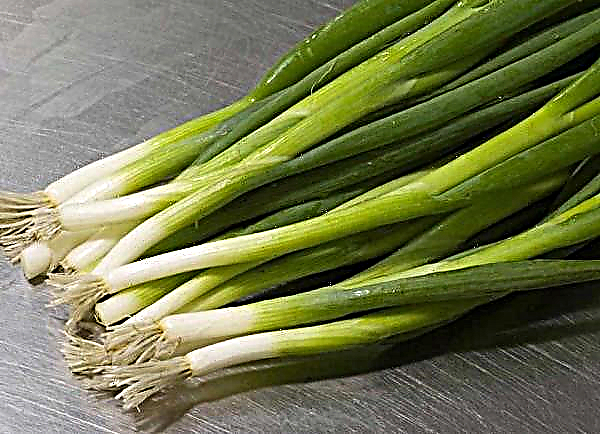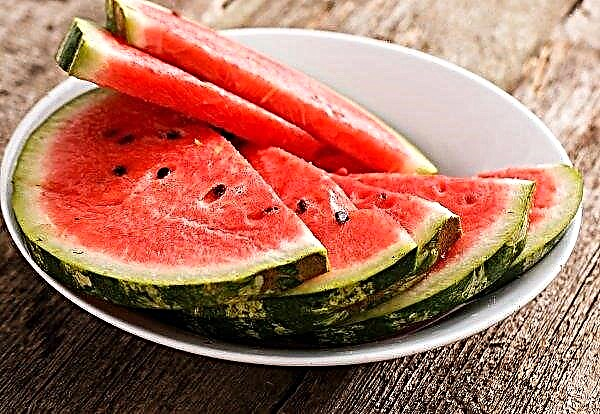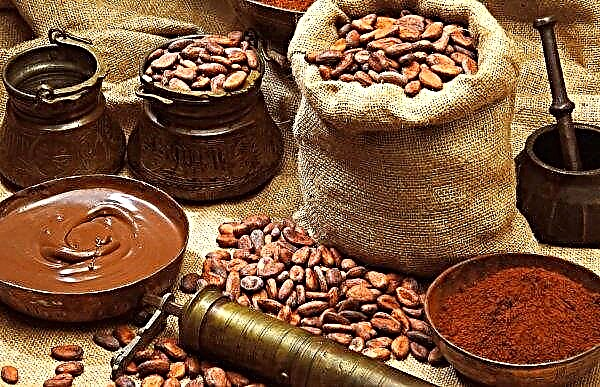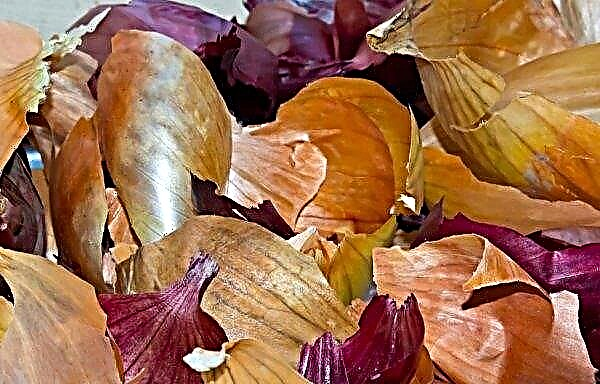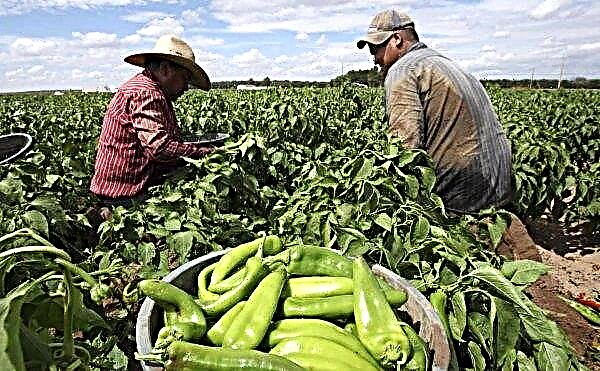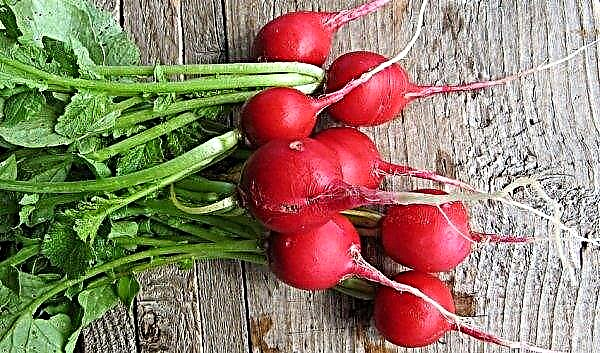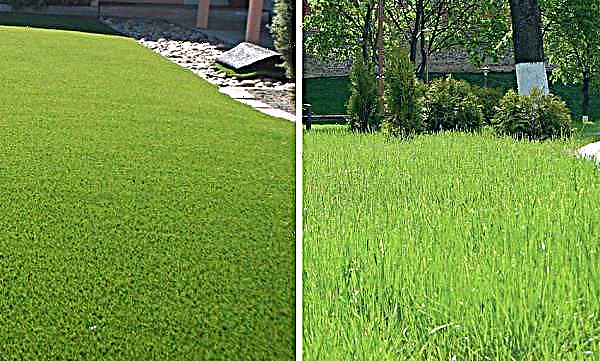Thanks to selection, the geography of growing heat-loving pepper expanded to the northern climatic zones. Many vegetable growers, having loved and appreciated the taste and useful properties of pepper, take part of the plot in the garden or in the greenhouse for this vegetable crop. This material will tell about the advantages of the Snowfall F1 variety, how to properly prepare seeds and grow a healthy plant from seedlings.
Description and characteristics of the variety
The early ripe sweet hybrid of pepper Snowfall F1 enters fruiting 110–120 days after sowing. It is reliable when grown, has good germination, is very productive. In the southern regions it grows well in open areas, in the north - it gives a good crop in the greenhouse. After the appearance of the 8-12th leaf, inflorescences form.
Formed adult bushes are powerful and tall (up to 80 cm) with an abundance of leaves and fruits. In a small area, it is enough to plant 3-4 bushes to get an excellent crop. Juicy fruits with a sweet taste, are used both in preservation and in salads.
Check out other varieties of early sweet pepper:
History of Variety Breeding
The Snowfall variety belongs to the first generation of hybrids, as evidenced by the F1 symbols in the name. Breeders create hybrids by hand, crossing the main species that are similar in appearance, in order to obtain the most productive plants with pronounced unique characteristics:
- the possibility of growing in open ground;
- expansion of climatic zones;
- high quality fruits;
- increased productivity;
- resistance to diseases and pests.
Photo gallery
Productivity
Pepper Snegopad F1 practically does not know competitors in productivity. From one bush, you can collect up to 50-60 marketable fruits (about 5 kg), if the agrotechnics of cultivation is observed.
Important! It makes no sense to collect seeds from hybrid varieties. Subsequent generations of peppers lose the declared characteristics of the variety.
Description of the fetus
The fruits of Snowfall F1 are cone-shaped, even, up to 15 cm long and weighing up to 100 g. With technical maturity, the skin of the vegetable is thin, smooth, milky cream in color, with further ripening acquires a reddish color. The pepper is not very fleshy, but the flesh is juicy and sweet . The walls of the fetus are of medium thickness (6–8 mm).
Advantages and disadvantages of the variety
- Pepper Snowfall has the following positive characteristics:
- early ripeness (allows you to form fruits and achieve taste and nutritional value in a short period);
- cold resistance;
- quick crop growth in a short summer;
- excellent taste and aroma of fruits;
- the size of the fetus is convenient for transportation and handling;
- the fruits are qualitatively preserved.
- Disadvantages of the Snowfall variety:
- Plants make high demands on heat and lighting (with a lack of light, the ovaries and flowers fall off);
- pepper of this variety must be grown in a ventilated area, otherwise the plants will rot and become sick;
- plants need fertile soil;
- the plant is indeterminate, that is, prone to unlimited growth, therefore, on open ground stepsons should be manually removed so that the plant moves up;
- plants are tall (up to 1 m) and require garters to trellises or stakes so that the stems do not break under the weight of the fruit.
Did you know? Both chocolate and pepper release endorphins into the blood, the so-called hormones of joy, but given the calorie content of chocolate, being happy with pepper is more beneficial for the figure.
Features and rules for growing varieties of Snowfall
Healthy and strong seedlings are a direct path to a future high yield. The viability of seedlings depends on the quality of the seeds and on the condition of the soil in which they will grow in the initial phase of development.
Preparation of seeds for sowing
Seeds are sold ready for planting, but they do not swell well and germinate, so they need to be prepared for sowing. Seeds are soaked:
- for half an hour in a weak solution of potassium permanganate: it will disinfect the seeds, and the seedlings will be less sick;
- in a solution of growth stimulant ("Novosil", "Silk", "Epin-extra", "Energen", "Zircon");
- in aloe juice.
 After this, planting material must be dried and can be sown.
After this, planting material must be dried and can be sown.Preparing land for seedlings
The soil for sowing seedlings should be fertile and loose, which will facilitate air ventilation at the roots and moisture access.If you take the soil from your own area as a basis, the subsequent transplantation into the soil of the seedlings will transfer less painfully, grow faster and bear fruit more abundantly.
Soil is best prepared independently from autumn. During the winter, it will freeze, which will help get rid of pests. Self-made mixture is as follows:
- I keep the land, humus, turf and sand. Add a glass of ash for every 10 kg of soil mixture.
- Even peat and sand with the addition of two parts of turf.
- Equally humus, turfy and leafy soil.
- Sand, humus, peat and land in equal parts.
 Sand and peat can be replaced with sawdust by treating them before this boiling water. You can fertilize the soil with a solution of any phosphorus and potassium fertilizer (25 g each) and urea (10 g) per 10 liters of water.
Sand and peat can be replaced with sawdust by treating them before this boiling water. You can fertilize the soil with a solution of any phosphorus and potassium fertilizer (25 g each) and urea (10 g) per 10 liters of water.Seeding Rules
You can sow seeds of Snowfall pepper at the end of February or in the middle of March. Seeds are sown in such a way that the age of the plant when transplanted into the ground is 50-60 days. Depth of embedment - no more than 2 cm, the soil must be compacted when sowing.
Seedling containers should be covered with cellophane or glass and put in a warm place. Depending on the temperature of the soil, the seedlings are as follows:
- +28 ... + 32 ° С - in a week;
- +25 ... + 27 ° С - two weeks;
- above +36 ... + 40 ° С - seeds lose their germination;
- below + 15 ° С - seeds can rot, and there will be no seedlings.

Features seedlings care
Seedlings of pepper are not stretched (it can be kept on the eastern windows), but it requires abundant watering and observing the temperature regime, it responds to top dressing with accelerated growth.
Topping seedlings must be done carefully so as not to burn the young shoots. They are carried out twice a month with liquid mineral fertilizers (Ideal, Biomaster, Terrace Lux) and combined with the next watering. But if the soil with seedlings is fertile, favorable conditions are created for seedlings, then even in the absence of top dressing, plants will please you.
It is advisable to water the seedlings in the morning with settled water at room temperature in small portions. Weeding and light cultivation are also required. With a lack of sunlight, plants are illuminated with a phytolamp. So that the seedlings do not lean towards the light, the seedlings are periodically rotated around its axis.
With a lack of sunlight, plants are illuminated with a phytolamp. So that the seedlings do not lean towards the light, the seedlings are periodically rotated around its axis.
Rules for planting seedlings in the soil
Before planting seedlings on the site, it must be hardened. For this, containers with seedlings are taken out into the open air for two weeks, first for half an hour, with a gradual increase in the time of “walking” until the whole daylight hours.
The variety Snowfall F1 tolerates fluctuations in daytime (+15 ... + 22 ° C) and night (+8 ... + 15 ° C) temperatures, which often happens after transplanting. But in order to avoid developmental delay and yield reduction, it is better to start transplanting seedlings into the soil when the soil has already been warmed up to + 20 ° C. Previously, seedlings are planted only in the greenhouse.
For planting, it is better to choose a cool day, because in hot weather the plants dry out when they come into contact with very hot soil.
Pepper is a light, warm and hygrophilous plant, and for its cultivation you need to choose a well-lit place, hidden from drafts and winds. The best predecessors for vegetables: cabbage, pumpkin, cucumbers, onions. Avoid areas where tomatoes, eggplant and potatoes were grown before.Important! To avoid over-pollination, plant sweet and bitter varieties of pepper as far as possible from each other. Otherwise, instead of sweet peppers, you will get bitter, and bitter ones will lose their spiciness.
 Pepper does not tolerate even slight damage to the roots and is restored for a long time, so it is better to transplant seedlings by transferring containers with a seedling to ensure maximum preservation of the roots.
Pepper does not tolerate even slight damage to the roots and is restored for a long time, so it is better to transplant seedlings by transferring containers with a seedling to ensure maximum preservation of the roots.So that the bushes do not obscure each other, seedlings need to be planted according to the scheme: at least 25 cm between the shoots and at least 60 cm in the aisle. Sprouts are planted in the dug hole at the level of the root neck and watered. After a week, the strengthened seedlings can be fed.
Two weeks after planting, you can treat the peppers with the Zircon preparation 1 time, which regulates root formation, growth, fruiting and flowering and allows the plant to more easily tolerate stress.Important! Manure should not be used for fertilizer, as pepper will grow leaves to the detriment of the ovaries. If at the beginning of the growth of pepper in the soil there is a lot of nitrogen, then the plant will drop not only the ovaries, but also the buds.
Rules for care after planting in the soil
Hybrids with strong growth require support and garters, because rain and wind can knock down or break plants. Constant humidity around the plant and the absence of drafts are what pepper gratefully responds to. Mulch (pine bark, straw, mowed grass, needles) copes with this task perfectly.
Pepper should be in the sun all day, but in hot weather, plants in the sunshine, if possible, cover with a cloth or burdock, protecting from burns and wilting.
Watering
Pepper loves moisture, and even slight drying out of the soil cannot be compensated for by abundant watering in the future. Watering in the first days after planting should be done often, then once every 10 days. On hot days you need to water in the morning and evening hours directly under the bushes, avoiding water getting on the leaves. The best option would be drip irrigation.
On hot days you need to water in the morning and evening hours directly under the bushes, avoiding water getting on the leaves. The best option would be drip irrigation.
Fertilizer application
The emergence of a new leaf suggests that the plant has taken root and can be fed. Top dressing can be combined with the next watering. The composition of the fertilizer is the same as when preparing the land for seedlings - potash and phosphorus complexes with the addition of urea. Taking into account the fertility of the soil, the plants are fed 2-3 more times per season. All dressings are carried out in the evening, on moist soil. It should be remembered that pepper is a great connoisseur of nitrogen and potassium.
Hilling and loosening the soil
Loosening should be carefully and shallow (not deeper than 6 cm), at least 1 time in 2 weeks, trying not to damage the roots. This procedure can be ruled out by mulching the soil with sawdust, straw, coniferous needles with a layer of 7-10 cm. Loosening the rows can be done more often, several days after watering, which ensures air access to the roots.
Did you know? Hot pepper in medicine is used not only in the manufacture of pepper patch, but also in means to increase appetite, improve digestion, and is also part of warming ointments.
Bush formation
 The formation of the bush consists in the timely removal of leaves and stepsons, growing to the fork of the stem, leaving 4-5 upper stepsons.The branches and ovaries inside the bush are also removed so that there is no shading, since the fruits grown in the shade will be curved. But in a dry and sultry summer it is better not to pinch, because leaves and branches will protect the soil from drying out.
The formation of the bush consists in the timely removal of leaves and stepsons, growing to the fork of the stem, leaving 4-5 upper stepsons.The branches and ovaries inside the bush are also removed so that there is no shading, since the fruits grown in the shade will be curved. But in a dry and sultry summer it is better not to pinch, because leaves and branches will protect the soil from drying out.
In order to form a compact bush and strengthen the lateral shoots, you need to pinch the top of the central stem and remove weak leaves from the fruiting processes in a timely manner.
By the end of the season, flowers and buds should be cut off so that the ovaries can ripen. On a powerful and strong plant, you can leave a lot of fruits, and on a weak one - less, removing flowers and ovaries.
Diseases and Pests
To prevent the fight against diseases and pests, pepper crops must be treated twice a season with copper-containing preparations (copper sulfate, Bordeaux mixture, “Khom”, “Oksikhom”) and aphids and ticks (“Aktara”, “Corado”, “Fitoverm”, "Healthy Garden"). Pepper plants should be inspected regularly so as not to miss the first signs of illness and to start the fight in time:
Pepper plants should be inspected regularly so as not to miss the first signs of illness and to start the fight in time:
- purple spots appeared on the leaves and fruits - the plant lacks phosphorus;
- root rot appeared - waterlogging of the soil;
- white, as if scorched, spots on the fruits, especially in the lower part of it, are the result of sunburn;
- rot on the fruit - a lack of calcium;
- brown border on curled leaves - lack of potassium.
Did you know? From ground pepper we often sneeze. This happens because it contains piperine alkaloid, which, getting on the mucous membrane along with breathing, irritates the nerve endings, as a result of which sneezing occurs.
Harvesting and crop applications
Gather pepper once a week, choosing the fruits of technical or biological maturity. Vegetables need to be cut with a knife, scissors or secateurs, so as not to damage the stems.
At the end of the season, the stems with unripe fruits should be pulled out, transferred to a warm place where they will mature themselves. You can transplant the plant into a pot, and pepper will grow and bear fruit at home until next year. For short-term storage, you need to put the pepper in boxes or boxes, overlaying layers of paper. If you put a ripe apple in each layer, then the unripe fruits of pepper will mature faster.
For short-term storage, you need to put the pepper in boxes or boxes, overlaying layers of paper. If you put a ripe apple in each layer, then the unripe fruits of pepper will mature faster.
Use pepper to prepare salads, hot dishes. It is canned and frozen. The useful substances of the vegetable are preserved completely with any type of processing.
Having once grown Snowfall pepper in your area, you will love it forever. Unpretentious in cultivation, it will delight you with an abundant harvest of delicious and beautiful fruits, provide fresh vitamins in the summer, and canned in the fall and winter.


